6October 2023
You may not think about it often, but have you ever wondered how companies tackle the sensitive issue of bathrooms? It’s a topic that rarely comes up in casual conversation, yet it plays an important role in creating a comfortable and inclusive environment for employees and customers alike. From providing gender-neutral facilities to implementing strict cleanliness protocols, companies have developed diverse approaches to ensure that everyone feels respected and at ease in these private spaces. Let’s explore the various strategies that businesses employ to navigate the complex terrain of bathroom management.
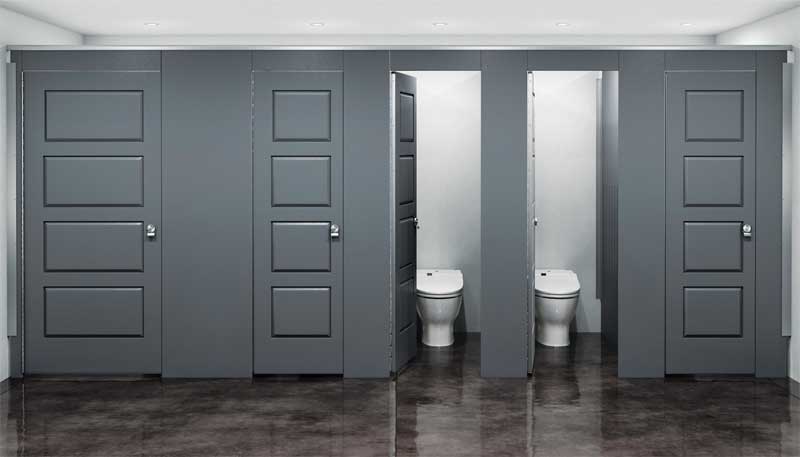
This image is property of www.constructionspecifier.com.
Privacy Concerns
Implementing Single Occupancy Bathrooms
When it comes to privacy concerns in public bathrooms, one effective solution is to implement single occupancy bathrooms. These provide individuals with a private and comfortable space where they can use the facilities without the worry of sharing it with others. By dedicating specific areas for single use, companies can strive to create a sense of security and respect for individuals’ personal space.
Maintaining Clean and Well-Stocked Bathrooms
In order to address privacy concerns, it is crucial for companies to maintain clean and well-stocked bathrooms. Regular cleaning and restocking of necessary supplies such as toilet paper, soap, and hand sanitizer demonstrates a commitment to hygiene and ensures that users feel comfortable and supported. By prioritizing cleanliness and organization, companies can promote a positive bathroom experience for all individuals.
Installing Privacy Features
To enhance privacy in public bathrooms, installing various privacy features is key. This can include sturdy and reliable lock systems on stall doors, soundproofing measures to reduce noise transmission, and visual barriers to ensure a sense of privacy within the facility. Implementing these privacy features helps to create an environment where individuals can attend to their personal needs without feeling exposed or vulnerable.
Implementing Clear Policies
To address privacy concerns, it is important for companies to implement clear policies regarding bathroom usage. These policies should outline expectations regarding behavior, cleanliness, and respect for others’ privacy. By clearly communicating these guidelines, companies can foster a sense of accountability and ensure that everyone feels comfortable and safe using the bathroom facilities.
Gender-Neutral Bathrooms
Providing Inclusive Facilities
To promote inclusivity, companies can provide gender-neutral bathrooms. These facilities are designed to be used by any gender, regardless of how individuals identify themselves. By offering gender-neutral options, companies demonstrate their commitment to inclusivity and respect for all individuals, regardless of their gender identity.
Educating Employees and Customers
To effectively implement gender-neutral bathrooms, it is crucial for companies to educate both employees and customers on the importance and significance of these facilities. Providing training and information on gender identity and inclusivity helps create a supportive and understanding environment for all. By fostering awareness and empathy, companies can ensure that everyone feels accepted and respected.
Ensuring Safety and Comfort
When implementing gender-neutral bathrooms, it is essential to prioritize safety and comfort. This can involve installing appropriate signage to clearly indicate the inclusive nature of the facility, ensuring that the bathrooms are well-lit and clean, and providing necessary amenities for individuals of any gender. By taking these steps, companies can create a safe and comfortable space for all users.
Addressing Concerns and Feedback
To ensure that gender-neutral bathrooms are successful, it is important for companies to address any concerns or feedback from employees and customers. Creating channels for open communication allows individuals to express their thoughts and concerns regarding these facilities. By actively listening and responding to feedback, companies can make necessary adjustments and improvements, ultimately fostering a more inclusive and supportive environment.
Accessibility for All
Complying with ADA Requirements
In order to ensure accessibility for all individuals, companies must comply with the requirements set forth by the Americans with Disabilities Act (ADA). This includes providing accessible parking spaces, ramps or elevators for wheelchair users, and properly sized and equipped bathroom stalls. By adhering to these regulations, companies can create an environment that is accessible and accommodating to individuals with disabilities.
Installing Supportive Features
To further enhance accessibility, it is important for companies to install supportive features in their bathrooms. This can include grab bars, raised toilet seats, and accessible sinks. These features help individuals with mobility challenges navigate the bathroom independently and safely. By investing in these accommodations, companies demonstrate their commitment to inclusivity and equal access for all.
Offering Assistance Options
In addition to physical accommodations, it is important for companies to offer assistance options for individuals who may require additional support. This can include trained staff members who can provide guidance and assistance upon request. By offering these options, companies create a welcoming environment where individuals with disabilities feel supported and valued.
Engaging with Accessibility Organizations
To ensure continuous improvement and stay up-to-date on accessibility standards, companies can engage and collaborate with accessibility organizations. These organizations specialize in advocating for the rights and needs of individuals with disabilities and can provide valuable insights and resources for companies looking to improve their accessibility efforts. By actively seeking partnerships and guidance, companies can continuously enhance their accessibility initiatives.
Hygiene and Sanitation Practices
Regular Cleaning and Disinfection
Maintaining a high standard of cleanliness is essential for promoting hygiene and sanitation in public bathrooms. Companies should establish regular cleaning schedules to ensure that all areas, including stalls, sinks, and floors, are cleaned and disinfected throughout the day. This helps prevent the spread of germs and ensures a safe and healthy environment for users.
Providing Adequate Soap and Hand Sanitizer
To encourage proper hand hygiene, it is important for companies to provide an adequate supply of soap and hand sanitizer in their bathrooms. Placing clear signage reminding individuals to wash their hands thoroughly and effectively can also reinforce good hygiene practices. By providing these necessary resources, companies promote a culture of cleanliness and contribute to the overall well-being of their employees and customers.
Displaying Proper Handwashing Guidelines
Educating individuals on proper handwashing techniques is crucial for maintaining good hygiene in public bathrooms. Displaying proper handwashing guidelines, such as the recommended duration and the steps to follow, can serve as a helpful visual reminder for users. By providing clear instructions, companies contribute to preventing the spread of germs and ensuring a hygienic bathroom environment.
Training Staff on Hygiene Protocols
To uphold hygiene and sanitation practices, it is important for companies to train their staff on proper cleaning and hygiene protocols. This includes teaching employees how to effectively clean and disinfect different areas of the bathroom, as well as promoting regular handwashing and personal hygiene among staff members. By investing in staff training, companies can maintain a clean and hygienic bathroom environment for everyone.
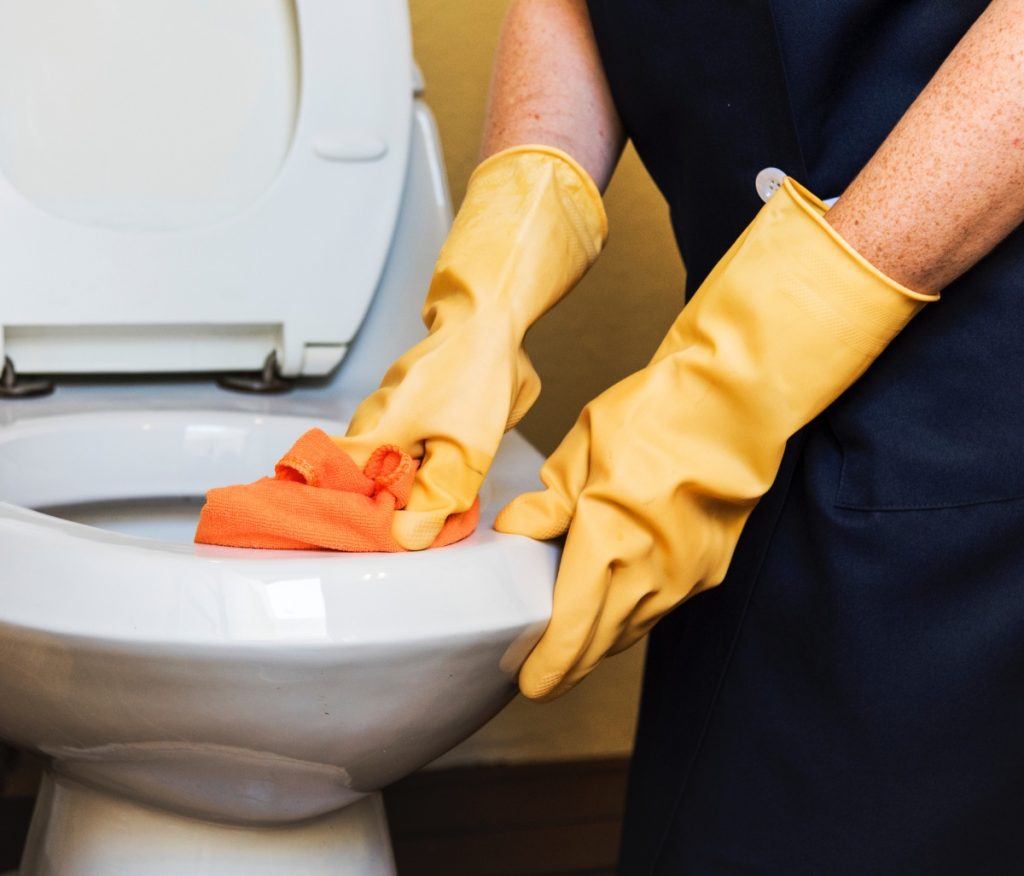
This image is property of uploads-ssl.webflow.com.
Sensitive Needs Accommodation
Offering Accommodations for Disabilities
Companies should strive to provide accommodations for individuals with disabilities to ensure a bathroom experience that is safe, comfortable, and dignified. This can include accessible stalls, assistance devices like handrails, and clear signage indicating the availability of these accommodations. By catering to the needs of individuals with disabilities, companies demonstrate their commitment to inclusivity and accessibility.
Providing Baby Changing Facilities
For parents with young children, having appropriate baby changing facilities in public bathrooms is essential. This can include changing tables equipped with safety restraints, diaper disposal bins, and designated private areas for breastfeeding. By providing these facilities, companies show their support for families and create a welcoming environment for parents and caregivers.
Catering to Personal Needs
Every individual has unique personal needs that may require accommodation in a bathroom setting. This can include providing sanitary product dispensers, disposal units for medical waste, or individual lockers for personal belongings. By anticipating and addressing these personal needs, companies can create a bathroom environment that is considerate, accommodating, and supportive for all users.
Ensuring Safety and Comfort
In addition to accommodations, it is important for companies to prioritize safety and comfort in their bathrooms. This can include well-maintained flooring to prevent slips and falls, sufficient lighting to ensure visibility, and temperature control to provide a comfortable environment. By taking these measures, companies can ensure that their bathrooms are safe and comfortable for all individuals.
Maintaining Security
Implementing Access Control Systems
To maintain security in bathrooms, companies can implement access control systems. This involves using key cards, codes, or other secure methods to restrict access to authorized individuals only. By implementing access control systems, companies can ensure that their bathrooms are secure and prevent unauthorized entry or misuse of the facilities.
Monitoring and Surveillance
For added security, companies may choose to install surveillance cameras in their bathroom facilities. This allows for monitoring of activity within the bathrooms and helps deter unlawful or inappropriate behavior. By having a visual record of any incidents, companies can take appropriate action and ensure the safety of their employees and customers.
Ensuring Adequate Lighting
Proper lighting is crucial for maintaining security in bathroom facilities. Well-lit areas help create a sense of visibility and deter potential illicit activities. By ensuring that all areas of the bathroom are properly illuminated, companies can promote a safe and secure environment for all users.
Developing Emergency Response Plans
Companies should develop comprehensive emergency response plans that address potential risks and incidents in bathroom facilities. This includes establishing protocols for medical emergencies, accidents, or any other unforeseen circumstances. By having clear guidelines and procedures in place, companies can efficiently respond to emergencies and ensure the safety and well-being of their employees and customers.
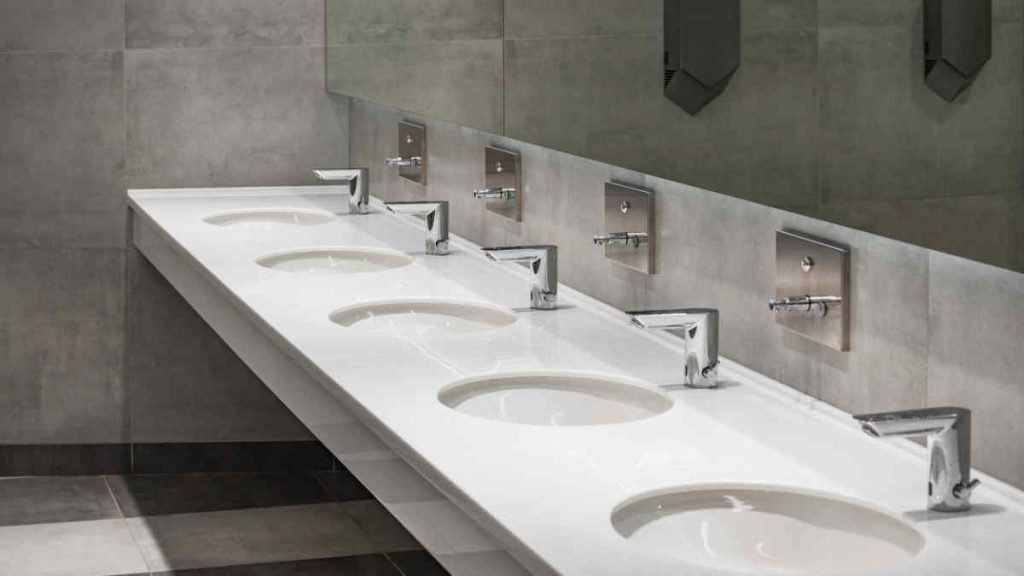
This image is property of shrm-res.cloudinary.com.
Addressing Cultural Requirements
Offering Religious Accommodations
To meet the diverse needs of individuals, companies should offer religious accommodations in their bathroom facilities. This can include providing foot-washing stations or bidets for religious practices that require specific hygiene rituals. By acknowledging and respecting religious customs and beliefs, companies demonstrate inclusivity and create a welcoming environment for everyone.
Providing Cultural Sensitivity Training
To promote cultural understanding and sensitivity, companies can provide training for their employees on various cultural practices. This training can help employees recognize and respect different customs when using the bathroom facilities. By fostering a culture of inclusivity, companies contribute to a respectful and harmonious environment for individuals from diverse cultural backgrounds.
Adapting Facilities to Cultural Practices
In some cases, it may be necessary for companies to adapt their bathroom facilities to align with specific cultural practices. For example, providing separate facilities for men and women in accordance with certain religious customs. By accommodating these cultural practices, companies demonstrate their commitment to diversity and create an inclusive space for individuals of all backgrounds.
Respecting Individual Privacy
Respecting individual privacy is essential in all aspects of bathroom management. Companies should ensure that their facilities provide adequate privacy features, such as fully enclosed stalls with secure locks and dividers between urinals. By prioritizing individual privacy, companies create an environment where all individuals feel valued, respected, and comfortable using the bathroom facilities.
Ensuring Gender Identity Acceptance
Training Employees on Diversity and Inclusion
To promote acceptance and understanding of gender identity, it is important for companies to provide training for their employees. This training should educate staff members on diverse gender identities, proper use of pronouns, and respectful communication practices. By fostering knowledge and awareness, companies can create an environment where everyone’s gender identity is respected and valued.
Maintaining Gender-Neutral Options
In addition to providing gender-neutral bathrooms, companies can offer gender-neutral options within their existing facilities. This can include designating certain stalls or sinks as gender-neutral, allowing individuals to choose the space that aligns with their gender identity. By maintaining gender-neutral options, companies demonstrate their commitment to promoting inclusivity and respecting individuals’ self-identified genders.
Respecting Pronoun Preferences
Companies should make an effort to respect individuals’ pronoun preferences in their bathroom facilities. This can involve displaying signage or providing educational materials emphasizing the importance of using correct pronouns. By creating an environment that acknowledges and respects individuals’ pronoun preferences, companies contribute to a more inclusive and affirming bathroom experience.
Addressing Discrimination or Harassment
Companies must have clear policies in place to address any instances of discrimination or harassment within their bathroom facilities. Training employees on identifying and stopping discriminatory or harassing behavior is crucial. By taking swift and appropriate action to address such incidents, companies can create a safe and accepting environment for all individuals.
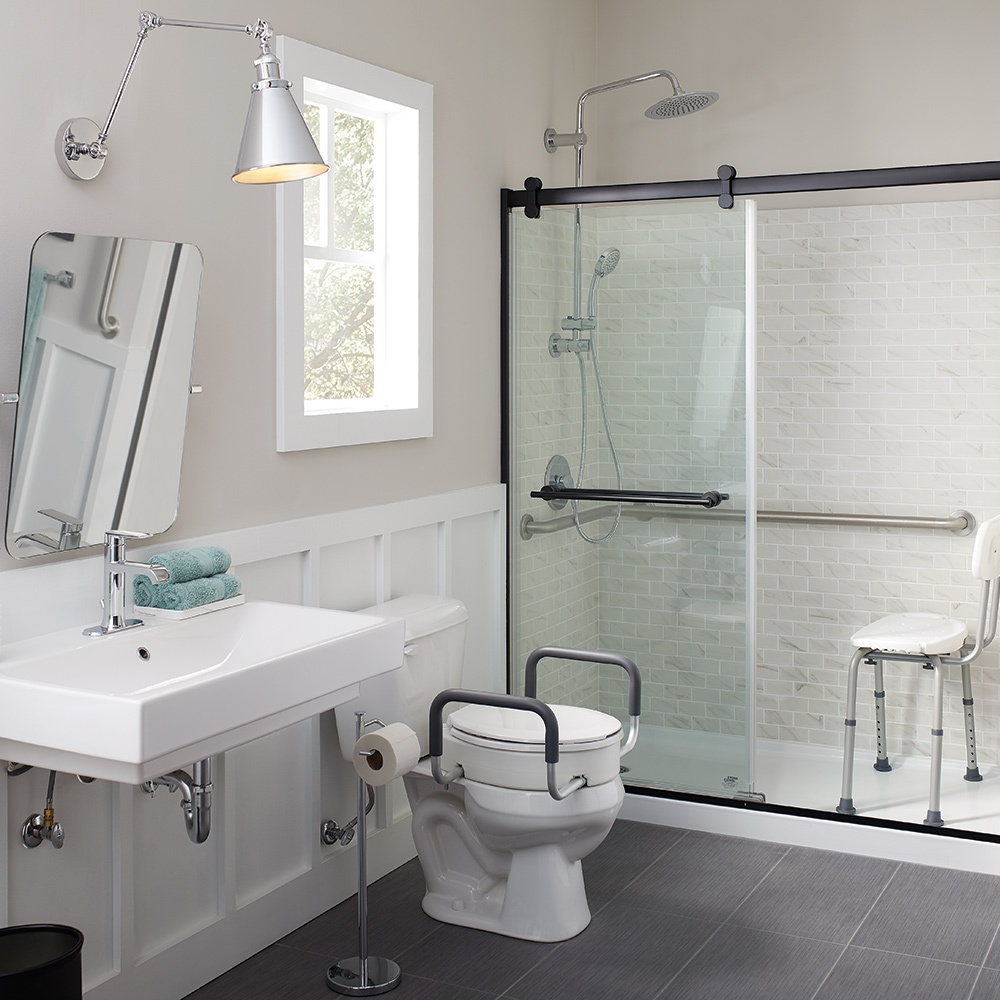
This image is property of contentgrid.homedepot-static.com.
Ensuring Safety and Security
Implementing Emergency Buttons or Alarms
To enhance safety in bathroom facilities, companies can consider implementing emergency buttons or alarms. These can be strategically placed within the bathrooms to provide individuals with a quick and discreet way to call for help in case of an emergency. By having these safety features in place, companies demonstrate their dedication to the well-being of their employees and customers.
Providing Contact Information for Assistance
To ensure the safety and security of individuals, it is important for companies to provide contact information for assistance within their bathroom facilities. This can include displaying phone numbers for emergency services or contact information for on-site security personnel. By making this information readily available, companies empower individuals to seek help if needed.
Installing Safety Measures
Companies should take proactive measures to create a safe environment within their bathroom facilities. This can include using non-slip flooring surfaces, installing handrails or grab bars in appropriate locations, and maintaining proper ventilation to prevent the buildup of harmful gases. By addressing potential safety hazards, companies minimize the risk of accidents and injuries.
Conducting Regular Safety Audits
To ensure ongoing safety and security, companies should conduct regular safety audits of their bathroom facilities. This involves evaluating the effectiveness of safety measures, identifying potential areas of improvement, and addressing any issues promptly. By regularly reviewing and updating safety protocols, companies demonstrate their commitment to maintaining a secure environment for all individuals.
Promoting a Respectful Environment
Promoting Inclusivity and Respect Policies
To create a respectful environment in bathroom facilities, companies must promote inclusivity and respect through clear policies. These policies should emphasize the importance of treating all individuals with dignity and recognizing their rights to privacy and comfort. By openly communicating and reinforcing these policies, companies set a standard of behavior that promotes respect for everyone.
Training Employees on Etiquette and Sensitivity
Providing training for employees on bathroom etiquette and sensitivity is crucial for maintaining a respectful environment. This training should cover topics such as respectful communication, appropriate behavior, and the importance of maintaining cleanliness. By equipping employees with the knowledge and skills to create a respectful environment, companies reinforce a culture of mutual respect and dignity.
Responding to Complaints Promptly
If a complaint arises regarding the bathroom facilities, it is essential for companies to respond promptly and effectively. This involves thoroughly investigating the complaint, taking appropriate action to address the issue, and providing a timely resolution. By demonstrating a commitment to addressing concerns, companies reinforce the importance of a respectful and supportive bathroom environment.
Creating Anonymous Feedback Avenues
To encourage open communication and feedback, companies can create anonymous feedback avenues for individuals to express their thoughts or concerns about the bathroom facilities. This can include suggestion boxes, online forms, or dedicated email addresses. By providing these avenues, companies give individuals a safe space to voice their opinions or share suggestions for improvement.
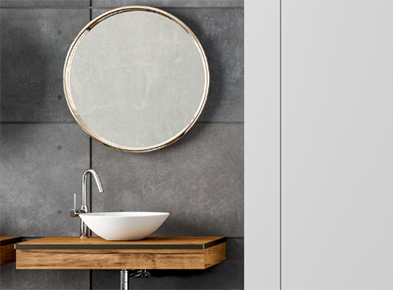
This image is property of www.cottonelle.com.
